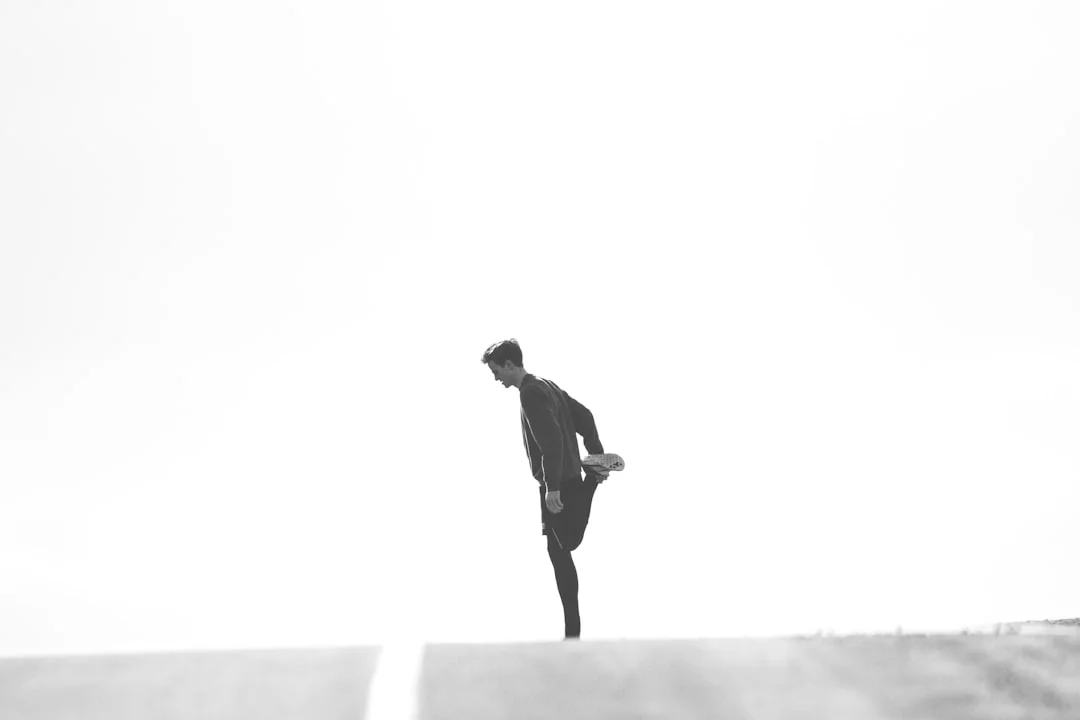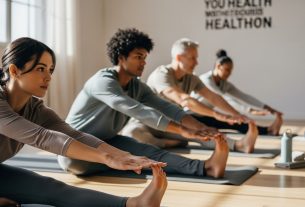Estimated Reading Time: 9 minutes
II the whirlwind of daily life, it’s easy to get swept away.
Deadlines, social media, constant notifications – they all pull us in a hundred different directions.
But what if there was a way to reclaim your peace, to truly be present in each moment?
The answer lies in the practice of mindfulness, and learning how to live more mindfully every day doesn’t require a drastic life overhaul.
It’s about making small, consistent shifts that ripple outwards, transforming how you experience the world.
I remember a time when I was perpetually stressed. My mind was a runaway train, constantly racing from one task to the next.
I realized I wasn’t truly *living*; I was just…surviving. Then, I stumbled upon mindfulness. At first, it felt awkward, almost silly.
But the more I practiced, the more I understood.
It’s about slowing down, noticing the small things, and finding a sense of groundedness amidst the chaos.
This journey wasn’t about completely eliminating stress, but rather, learning to navigate it with grace and resilience.
So, what exactly does it mean to live more mindfully? It’s fundamentally about paying attention to the present moment, without judgment.
It’s about observing your thoughts, feelings, and physical sensations as they arise, without getting swept away by them.
This isn’t about emptying your mind; that’s an impossible task!
Instead, it’s about becoming aware of your thoughts and emotions, and learning to respond to them rather than react.
Several core principles underpin the practice.
These include: paying attention, non-judging, patience, beginner’s mind (approaching each moment with fresh eyes), trust, non-striving (allowing things to be as they are), and acceptance.
Integrating these principles into your life isn’t a one-time effort. It’s an ongoing process of self-discovery and self-compassion.
It’s about cultivating a different relationship with your inner world.
The beauty of mindfulness is its accessibility. You don’t need to meditate for hours on end or retreat to a mountaintop.
You can begin to weave mindfulness into your daily routine through simple actions.
One of the easiest ways to cultivate mindfulness is through breathing exercises. Even a few deep breaths can bring you back to the present moment.
Try this simple exercise: Find a comfortable position. Close your eyes (or keep them softly focused).

Notice the sensation of your breath as it enters and leaves your body.
If your mind wanders (and it will!), gently guide your attention back to your breath.
Practicing this for just 5-10 minutes a day can make a profound difference.
How often do you scarf down a meal without even tasting it? Mindful eating involves paying attention to the experience of eating.
Notice the colors, textures, and aromas of your food. Chew slowly, savoring each bite. Notice the sensations of fullness and satisfaction.
This practice not only enhances your enjoyment of food, but also helps you cultivate a healthier relationship with eating.
Turning a simple walk into a mindful practice can be a game-changer.
Instead of focusing on your destination or your to-do list, focus on the sensations of walking. Feel your feet on the ground.
Notice the movement of your body. Observe the sights and sounds around you.
This can transform a mundane task into a moment of presence and connection with your surroundings.
Imagine the difference between a rushed, distracted walk, and one where you are actually present. What a shift!
In a world of constant noise, truly listening can be a radical act.
When someone is speaking to you, put away your phone, make eye contact, and give them your undivided attention.
Resist the urge to interrupt or formulate your response while they are still speaking.
Truly hear their words, and also, the emotion behind those words. This simple act can dramatically improve your relationships and sense of connection.
Of course, it’s not always easy. Distractions are inevitable. Self-judgment can creep in. But there’s good news – these are all part of the process.
The key is to approach challenges with self-compassion.
When your mind wanders during meditation or any mindful activity, simply acknowledge the distraction without judgment, and gently redirect your attention back to the present moment.
Don’t beat yourself up. It’s normal. View distractions as opportunities to practice returning to the present.
Be kind to yourself. Mindfulness is not about perfection. It’s about practice. There will be days when you feel like you’re failing.
Acknowledge your feelings with kindness, as if you are speaking to a close friend. Remember that everyone struggles.
This is an essential element when you are learning how to live more mindfully every day.
Your environment can significantly impact your ability to practice mindfulness. Create a space that supports your practice.

This could be a quiet corner in your home, a favorite spot in nature, or even a desk free from clutter.
Surround yourself with things that bring you peace and joy. Consider adding plants, calming colors, or objects that hold special meaning.
A peaceful environment helps encourage mindful living.
“Mindfulness isn’t just about relaxation; it’s about self-awareness and emotional regulation,” says Dr.
Emily Carter, a clinical psychologist specializing in mindfulness-based therapies.
“It allows us to observe our thoughts and feelings without judgment, which is crucial for managing stress, anxiety, and improving overall well-being.
When you are deciding how to live more mindfully every day, the key is consistency, not perfection.”
Consider Sarah, a working mother of two children. Her days are packed with work, childcare, and household chores. She felt constantly overwhelmed.
She decided to integrate small doses of mindfulness into her routine.
She started by practicing mindful breathing for five minutes each morning before the kids woke up.
During her commute, she listened mindfully to her audiobooks. She tried eating lunch without scrolling through her phone.
Slowly, Sarah noticed a shift. She was less reactive, more patient, and more present with her children.
Her stress levels decreased, and she began to experience more joy in her day-to-day life.
This is just one small example of how effective mindful practices can be.
Technology is a double-edged sword. It can be a major source of distraction, but it can also be a tool for practicing mindfulness.
There are numerous apps that offer guided meditations, mindfulness exercises, and reminders to be present.
Use technology mindfully by setting boundaries: scheduling specific times to check email or social media and turning off notifications during work and family time.
Utilize tech to help you on the journey of how to live more mindfully every day, instead of letting it overtake you.
There’s no magic number, and results vary from person to person.
Some people feel a difference after a few days or weeks, others experience the benefits over months. The key is consistency.
Even a few minutes of daily practice can make a significant impact over time.
The more you practice, the more you’ll experience the benefits in your life.
You absolutely do not need to sit still to practice mindfulness. In fact, mindfulness can be practiced in many ways.

You can practice walking meditation, mindful eating, or even simply observing your breath while doing chores.
The idea is to bring mindful awareness to any activity.
Find activities that resonate with you, and you’ll find it much easier to integrate them into your life.
That’s completely normal! The goal isn’t to completely stop thinking; that’s practically impossible.
The aim is to become aware of your thoughts without judgment.
When your mind wanders, and it will, simply acknowledge the thought and gently redirect your attention back to your chosen focus, such as your breath or the sensations in your body.
Be patient and kind to yourself; you are learning a new skill!
No special equipment or formal training is required to begin practicing mindfulness. All you need is yourself!
You can start with simple guided meditations or breathing exercises. There are many free resources available online, from apps to videos.
As you progress, you may consider attending a workshop or retreat to deepen your practice, but it’s not essential to begin your journey of mindfulness.
Learning how to live more mindfully every day is a journey, not a destination. There will be ups and downs, good days and bad days.
The most important thing is to keep practicing, to keep showing up for yourself.
Embrace the process, be patient, and trust that the benefits of mindfulness will unfold over time.
With consistent practice, you’ll find yourself more present, more resilient, and more connected to the richness of life.
This isn’t about becoming a different person; it’s about uncovering the person you already are – someone capable of experiencing more joy, peace, and presence in every moment.
Take a deep breath. You’ve got this.
Ready to take the next step? Join our newsletter for weekly health tips!
Frequently Asked Questions
How long do I need to practice mindfulness to see results?
There’s no definitive timeframe, as results vary greatly from person to person. Some individuals experience benefits within days or weeks, while others take months. The key is consistency. Even a few minutes of daily practice can make a significant impact over time. Be patient with yourself and keep practicing to build awareness.
What if I can’t sit still to meditate?
It’s perfectly fine if you find sitting still difficult! Mindfulness isn’t limited to seated meditation. You can practice walking meditation, mindful eating, or simply observe your breath while doing chores. The key is to bring mindful awareness to any activity.
Choose practices that resonate with you, and you’ll find it much easier to integrate mindfulness into your everyday life.
I find it difficult to quiet my mind. Any tips?
That’s extremely common! The goal of mindfulness isn’t to completely stop your thoughts, as that’s nearly impossible. The aim is to become aware of your thoughts without judgment.
When your mind wanders (which it will!), acknowledge the thought and gently redirect your attention back to your chosen focus, such as your breath or the sensations in your body. Treat yourself with kindness and be patient; developing this skill takes time and practice.
Does mindfulness require any special equipment or training?
No, you don’t need any special equipment or formal training to begin practicing mindfulness. You can start with simple guided meditations or breathing exercises. There are many free resources available online, including apps and videos.
If you wish to deepen your practice, you might consider attending a workshop or retreat later on, but it’s not necessary to start. The best resource you have is yourself.



